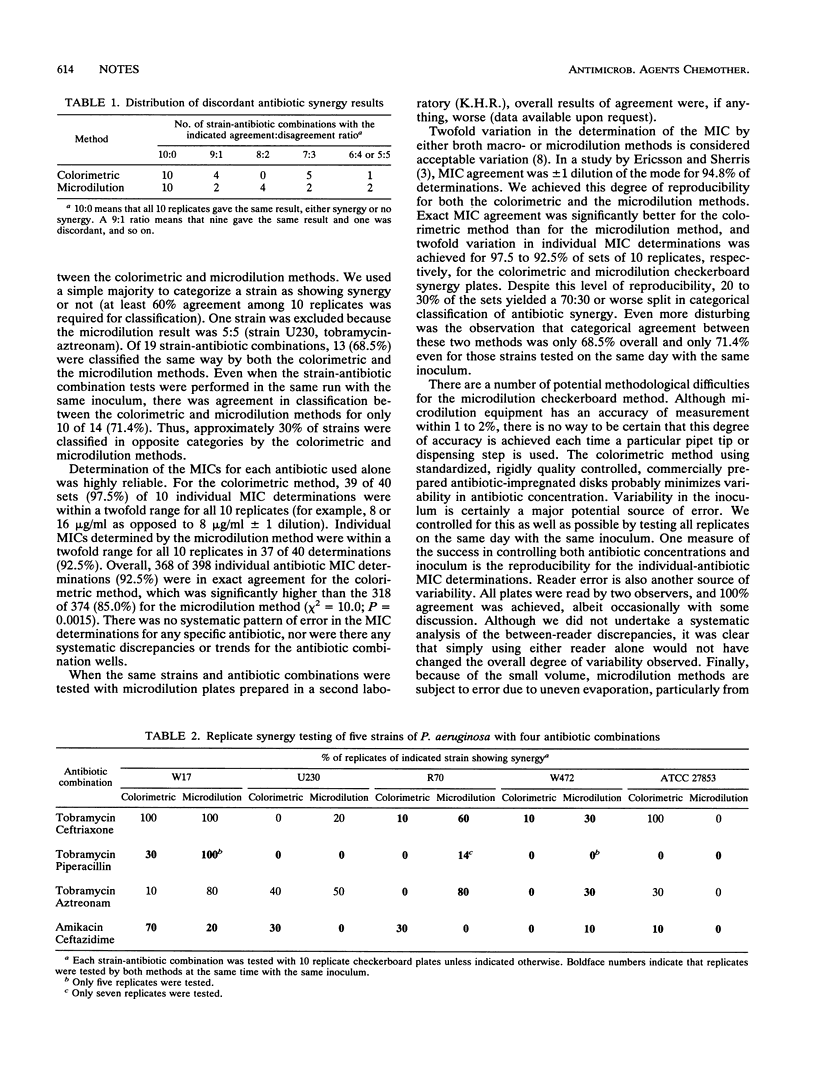Abstract
We assessed the reproducibility of the microdilution checkerboard method for measuring antibiotic synergy. Five strains of Pseudomonas aeruginosa were tested with four antibiotic combinations by using 10 replicates each. Twenty-five percent of replicate sets gave discordant classification results (i.e., a 7:3 or worse split in categorization). Determination of the individual MICs of each antibiotic alone was excellent; all 10 replicates were within 1 twofold dilution for 95% of the 80 sets of 10 replicates. The microdilution checkerboard method either should not be used or should be used with at least five replicates per determination, with > or = 80% agreement among the replicates required for classification.
Full text
PDF


Selected References
These references are in PubMed. This may not be the complete list of references from this article.
- Eliopoulos G. M., Eliopoulos C. T. Antibiotic combinations: should they be tested? Clin Microbiol Rev. 1988 Apr;1(2):139–156. doi: 10.1128/cmr.1.2.139. [DOI] [PMC free article] [PubMed] [Google Scholar]
- Hallander H. O., Dornbusch K., Gezelius L., Jacobson K., Karlsson I. Synergism between aminoglycosides and cephalosporins with antipseudomonal activity: interaction index and killing curve method. Antimicrob Agents Chemother. 1982 Nov;22(5):743–752. doi: 10.1128/aac.22.5.743. [DOI] [PMC free article] [PubMed] [Google Scholar]


